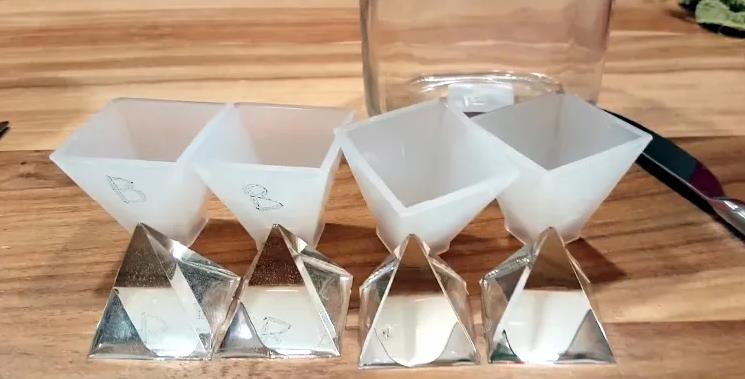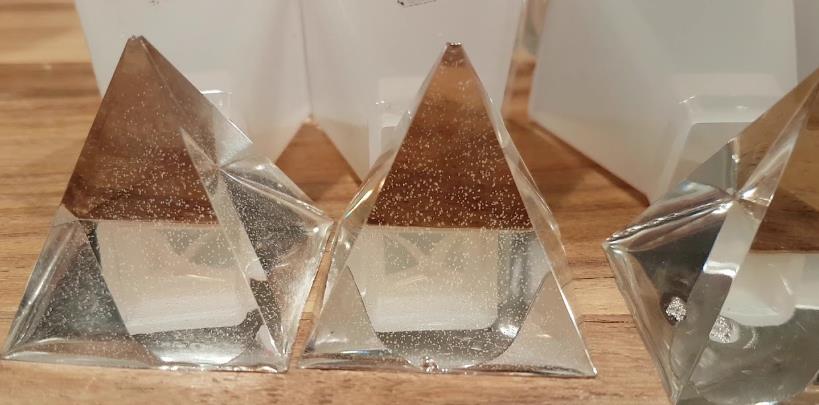You can degas resin without a vacuum chamber by using a pressure pot or mixing it thoroughly to release trapped air bubbles.
Understanding Resin Degassing
Basics of Resin Degassing
Resin degassing is a crucial process in resin casting, aiming to eliminate air bubbles that form during the mixing process. When resin components are mixed, air gets entrapped, which can affect the clarity and integrity of the final product. Degassing ensures a smooth, clear finish by removing these air bubbles. The process typically involves applying a vacuum or using other methods to encourage air bubbles to rise to the surface and pop. This step is especially important for high-precision or aesthetic projects where clarity and smoothness are essential.

Importance of Removing Air Bubbles from Resin
Removing air bubbles from resin is not just about aesthetics; it also impacts the structural integrity of the cast. Bubbles can create weak points within the material, making the final product prone to cracking or breaking under stress. In applications where resin is used as an insulator or in high-stress environments, ensuring a bubble-free cast is crucial for safety and durability. Additionally, in commercial production, a bubble-free product is often a quality benchmark, influencing the perceived value and marketability of the item.
Proper resin degassing ensures not only the visual appeal and smoothness of the final product but also its strength and functionality.
For more detailed information on resin degassing and its importance, explore this Wikipedia page on Resin Casting.
Manual Methods for Degassing Resin
Stirring Techniques to Minimize Air Entrapment
When mixing resin, the technique used can greatly influence the amount of air entrapped. A slow and deliberate stirring motion is key. Rapid or vigorous stirring tends to incorporate more air, leading to increased bubble formation. Using a flat, wide stirrer can help spread the resin and hardener mixture evenly, reducing air pockets. Ideally, stirring for a consistent period – generally around 3 to 5 minutes – ensures thorough mixing without excessive air incorporation.
Using a Heat Gun or Hair Dryer to Remove Bubbles
Applying gentle heat is an effective way to remove air bubbles from the surface of the resin. A heat gun or hair dryer, set on a low heat setting, can be passed over the surface of the resin. The heat helps to thin out the resin, allowing bubbles to rise to the surface and pop more easily. It’s important to keep the heat source moving to avoid overheating or burning the resin. Typically, a heat gun with a power rating of 300 to 500 watts is sufficient for this purpose. This method is particularly useful for thin layers of resin where bubbles can be more visible.
These manual techniques are cost-effective and accessible, making them suitable for small-scale or hobbyist resin casting projects.
For additional insights into resin casting and degassing techniques, a visit to the Wikipedia page on Resin Casting might be beneficial.
Chemical Approaches to Resin Degassing
Selecting Low-Viscosity Resins for Easier Bubble Release
Choosing the right type of resin is crucial for minimizing air entrapment. Low-viscosity resins are thinner and more fluid, allowing air bubbles to rise and escape more easily. These resins typically have a viscosity range of 50 to 600 centipoise (cP), which enhances their ability to self-degas. This property makes them ideal for intricate molds where removing air bubbles manually is challenging. While low-viscosity resins might take longer to cure, their ease of bubble release often outweighs the extended curing time, especially in applications requiring high clarity and detail.

Additives and Agents that Aid in Bubble Release
There are specific additives and agents designed to help in the degassing of resin. Silicone oil and certain surfactants can be mixed into the resin to lower surface tension, thereby facilitating the release of air bubbles. These additives are used in minute quantities, typically around 0.1% to 0.5% of the total resin volume. They work by making the resin mixture less cohesive, allowing air bubbles to rise to the surface more readily. It’s important to carefully follow the manufacturer’s guidelines when using these additives, as overuse can affect the resin’s curing process and final properties.
Using low-viscosity resins and appropriate additives can significantly improve the degassing process, leading to a clearer and more consistent final product.
For more in-depth information on resin types and additives, a resource like the Wikipedia page on Resin Casting can provide valuable insights.
Alternative Mechanical Methods
Utilizing a Pressure Pot for Degassing
| Aspect | Details |
|---|---|
| Function | A pressure pot applies uniform pressure on the resin, compressing air bubbles to a size where they are not visible. |
| Cost | Pressure pots vary in price, typically ranging from $100 to $500. |
| Pressure Range | Optimal pressure ranges from 40 to 60 psi for effective bubble removal. |
| Capacity | Available in various sizes, from small pots for hobbyist use to larger industrial models. |
| Advantages | Effective in removing air bubbles, especially in thicker casts. |
| Limitations | Requires careful monitoring of pressure levels to avoid resin distortion. |
DIY Solutions for Resin Degassing at Home
| Aspect | Details |
|---|---|
| Techniques | Simple methods like tapping the mold or using a vibrating table can help move bubbles to the surface. |
| Cost | Minimal; often utilizes household items. |
| Effectiveness | Varies; more effective for small or thin casts. |
| Materials Needed | Common household items like a vibrating massager or a homemade vibrating table. |
| Advantages | Low-cost and accessible options for small-scale projects. |
| Limitations | Less effective for larger or more intricate molds. |
While a pressure pot is a more reliable method for degassing, DIY solutions can be effective for smaller projects or when working with limited resources.
For additional information on degassing techniques and their applications, you might find the Wikipedia page on Resin Casting helpful.




